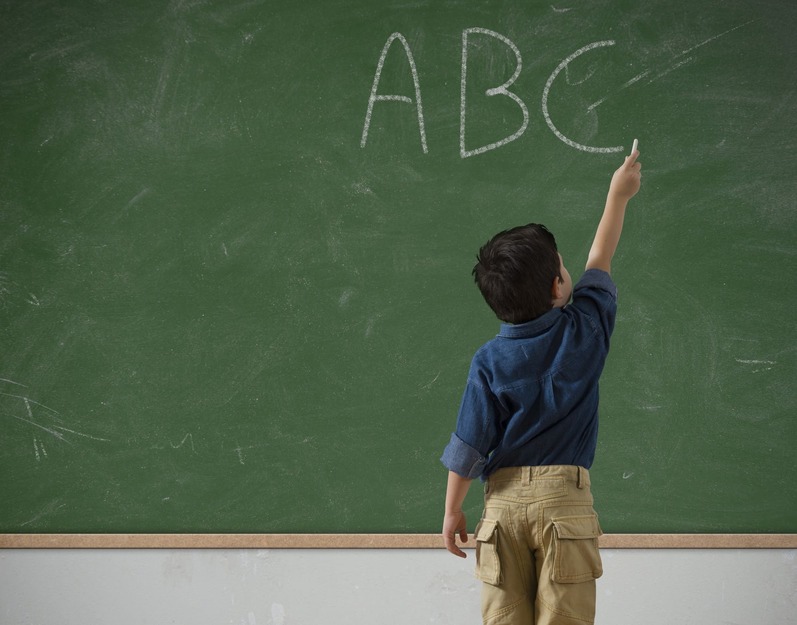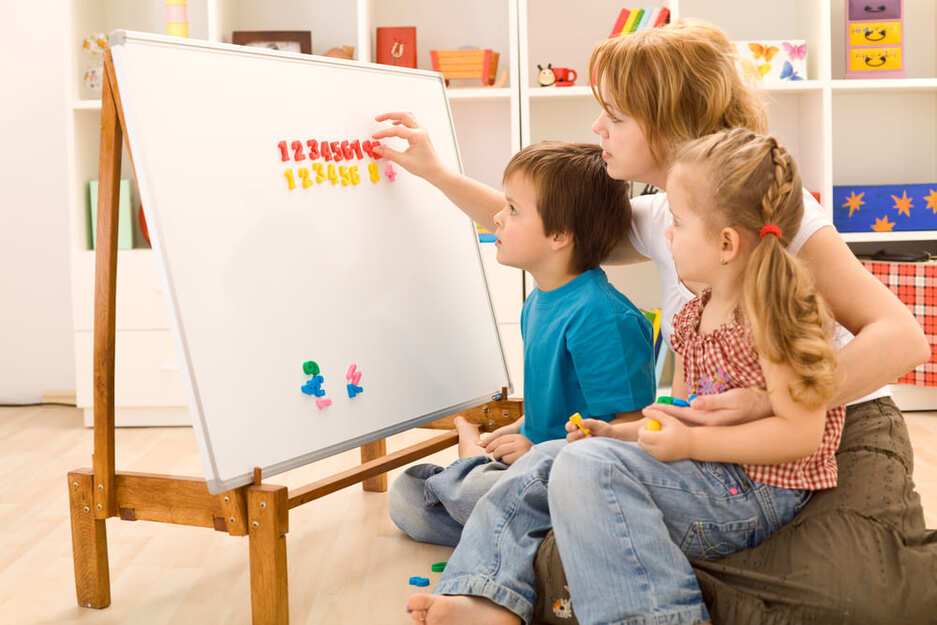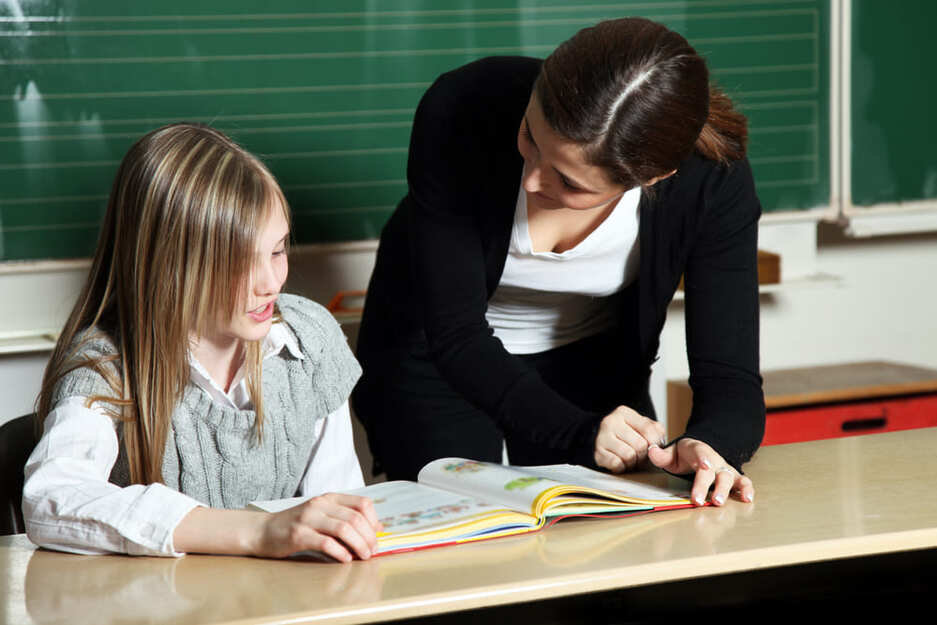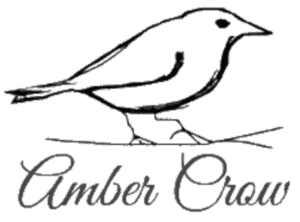Learning the alphabet and numbers is like opening the door to a world full of knowledge for early learners. How often do we, as adults, appreciate the power of knowing our ABCs and 123s? In this article, we’ll explore the fascinating universe of letters and numbers.
Understanding Alphabets

Importance for Early Learners
Letters are not just symbols; they’re building blocks for communication. From a tender age, children begin recognizing letters, and it’s our job to guide them. Isn’t it incredible how a simple letter can lead to a world of stories and information?
Amber Crow Pro-Tip: Turn alphabet learning into a treasure hunt. Hide letters around the house and encourage your child to find them. Each discovery can be a fun way to reinforce letter recognition and sounds, turning learning into an exciting game.
Understanding Numbers

Basics
Numbers are more than just digits. They are the building blocks forming the foundation of mathematics and logical thinking. The understanding of numbers is akin to understanding the basic rhythm of the universe.
Have you ever noticed how children naturally start counting things around them? Fingers, toys, trees – it’s like an innate curiosity that guides them.
Imagine numbers as the primary colors in a palette. They can blend, move, and dance to create an entire universe of mathematical concepts. Here’s how:
- Recognizing Numbers: Recognition is the first step. When a child connects the symbol ‘5’ with the word ‘five,’ and the concept of five objects, they begin to grasp the number’s essence.
- Number Sense: Understanding that numbers have value, and they relate to each other, forms the basic number sense. It’s like building the first layer of a puzzle.
- Patterns and Sequences: Recognizing that numbers follow an order helps in understanding patterns and sequences. It’s like weaving the rhythm in music.
Counting 1-10
Counting from one to ten is like learning to crawl before you walk in the world of mathematics. It’s the most basic and essential skill that sets the stage for all subsequent learning. Just like a baby bird learning to fly, these small steps pave the way for bigger leaps in learning.
- Learning through Play: Counting can be taught through playful activities like counting toys, singing songs, or using fingers. Who would have thought numbers could be so much fun?
- Visual Understanding: Using visual aids like charts or physical objects can create a tangible connection with numbers. It’s like putting on 3D glasses and seeing numbers come to life!
- Connection with Daily Life: By connecting numbers with everyday objects and situations, a child can relate to numbers naturally. How many apples are in the basket? How many buttons are on the shirt?
- Building Confidence: Mastering the art of counting from 1 to 10 not only instills the basic numerical understanding but builds confidence. It’s like taking the first confident steps before running a marathon.
Connecting Alphabets & Numbers Activities

Engaging the Child
Alphabets and numbers can dance together! Picture them as two friends, holding hands, skipping down the lane of early learning. From playing games to solving simple puzzles, you can blend letters and numbers to create a joyful learning experience.
It’s like turning a mundane classroom into a playground filled with endless opportunities.
Think about singing the ABC song with your child while clapping to the count of each letter. Or perhaps, drawing a number shaped like an animal, and associating it with an alphabet that starts with the same sound.
Have you ever tried using magnetic letters and numbers on the fridge for an exciting kitchen learning session? These connections create a holistic approach to learning and engage the child in natural and fun ways.
Amber Crow Pro-Tip: Create simple DIY puzzles that combine letters and numbers. For example, matching a number with a group of objects or finding the first letter of a number (like ‘F’ for Five). This activity can enhance both letter and number recognition simultaneously.
The ABCs A to Z

Teaching Techniques
The alphabet is the skeleton of language. Teaching the A to Z of the alphabet isn’t just about rote learning. It’s about creating an environment where letters come alive, almost like characters in a story. Imagine ‘A’ as an apple, juicy and red, or ‘B’ as a ball bouncing around.
How about crafting a story for each letter? The ‘S’ could be a snake slithering through the grass. ‘M’ might be a mountain with its mighty peaks. Engaging storytelling not only builds the child’s vocabulary but also fosters creativity and curiosity.
The letters aren’t merely static characters on a page; they’re dynamic, full of life, each with its personality and tale.
Numbers and Mathematical Foundations 1 to 20

Building Concepts
Numbers are not merely for counting; they form the bedrock of logical and analytical skills. Imagine if every number from 1 to 20 were a character in a story. ‘One’ could be a solitary tree standing tall, ‘Two’ might be a pair of twinkling eyes, and ‘Three’ could be a triangle with its three sides.
It’s fascinating to build a world with numbers, isn’t it? When a child understands that four is not just a digit but perhaps four friends holding hands, the concept of ‘four’ takes on a deeper meaning.
These connections make numbers relatable and tangible.
They become more than abstract symbols; they become friends, objects, and scenarios that children can visualize and relate to.
This way of teaching breathes life into numbers and alphabets, turning them into colorful, vibrant entities that children can engage with. It’s like turning black and white drawings into a vivid painting filled with color, emotion, and imagination. What once seemed like a dull task becomes an exciting adventure, ready to be explored.
Tools and Resources for Early Learners

Books
Books are like the wise old trees in the forest of education. They stand firm, providing knowledge and guidance, even in a world increasingly swayed by technology. Books can be a treasure trove of wisdom and fun when it comes to teaching children the basics of the alphabet and numbers.
Picture books filled with colorful illustrations and engaging stories can turn the ABCs and 123s into exciting adventures.
Whether it’s a playful rhyming book that sings the letters of the alphabet or a counting book featuring friendly animal characters, the right book can spark a child’s imagination. Reading together not only fosters a love for learning but also strengthens the bond between parent and child.
It’s like sailing together on a boat through the sea of language and math, discovering new islands of knowledge at every turn.
Apps and Online Tools
In contrast to the timeless nature of books, apps, and online tools are like the dazzling city lights in the education landscape. They offer the allure of interactivity, customization, and instant engagement.
Imagine an app that turns counting into a game where each number is a stepping stone towards a prize. Think of online platforms where children can trace letters on the screen, feeling the shape and sound of each one. These digital resources transform learning from a monotonous task into a thrilling experience.
Children today are growing up in a digital world, and incorporating technology into their learning can make education resonate with their daily lives. It’s like turning a playground into a magical land where alphabets are playful elves and numbers are friendly giants.
Finding the right balance between books and digital tools is essential. It’s akin to finding the perfect pair of shoes for a child’s first walk. Too tight, and it restricts movement; too loose, and it lacks support.
Similarly, the right blend of traditional books with modern apps and online tools creates an enriching learning environment that caters to the child’s unique needs and interests.
Have you considered integrating storybooks with an accompanying app that brings the characters to life? Or perhaps use a website with interactive number puzzles that align with your child’s learning pace? The possibilities are as vast as the ocean, waiting to be explored.
FAQs – Basics of Alphabet and Numbers for Early Learners
What Age Is Ideal for Teaching Alphabets and Numbers?
Around the age of 2-3 years is typically considered a good time to introduce children to the world of alphabets and numbers. However, it can vary depending on the child. It’s like planting a seed; some seeds sprout early, while others need more time.
Observing your child’s interest and readiness can guide you in taking this exciting step. Just as you wouldn’t rush a flower to bloom, waiting for the child’s natural curiosity to emerge will make the learning experience more organic and enjoyable.
How Can I Make Learning Numbers Fun?
The world of numbers is a playground waiting to be explored! Learning numbers can become a delightful adventure by using games, songs, and interactive activities. Imagine turning counting into a treasure hunt or a dance routine with music. From baking cookies and counting them together to using building blocks to understand addition and subtraction, making learning numbers fun is all about creativity and connection. It’s like turning the classroom into a carnival, where every game is a step toward wisdom.
Are There Any Specific Books for Teaching Alphabets?
Yes, numerous books cater to different learning stages and styles. Think of them as the many flavors in a delightful educational feast. There are books filled with rhymes that sing the ABCs, others with textured letters that allow little fingers to trace and feel, and some that use charming characters to introduce each letter. Choosing the right book for your child is like selecting the right melody for a dance. It has to resonate with the child’s rhythm, sparking curiosity and joy.
Can Technology Be a Part of Early Learning?
Certainly! In this digital age, apps and online tools can make learning engaging and interactive. Imagine your child learning the shape of ‘C’ by guiding a little virtual cat to its cheese, or discovering the concept of ‘Three’ by planting three virtual trees in a garden. Technology in early learning is like adding sprinkles to a cake; it adds color, fun, and a modern twist to traditional methods.
How Much Time Should Be Devoted Daily to Learning These Basics?
Consistency matters; around 20-30 minutes daily can be an effective approach. It’s like watering a plant; little daily drops can nurture robust growth. Too much at once can overwhelm, and too little can lead to slow progress.
Daily fun-filled learning tailored to the child’s pace and interest can build a strong foundation without feeling burdensome. Remember, it’s not about filling a quota of time; it’s about creating meaningful moments that enrich the child’s mind and heart.
Wrapping Up – Basics of Alphabet and Numbers for Early Learners
Teaching the alphabet and numbers to young learners is like planting the seeds of curiosity and wisdom. Through books, games, technology, and a blend of creativity and love, we educate and inspire. It’s more than rote learning; it sparks imagination and builds a foundation for lifelong curiosity.
Whether it’s singing the ABC song or counting with building blocks, each step is a joyful adventure, opening doors to exploration and understanding. In this beautiful journey, we’re shaping not just minds but dreams and futures, making them a remarkable part of growth.
